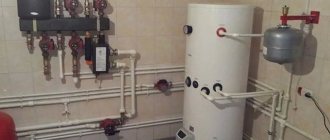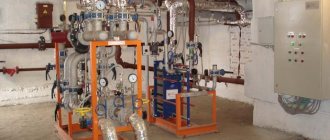About the heating fee.
According to Part 1 of Art. 153 of the Housing Code of the Russian Federation, citizens and organizations are obliged to pay for residential premises and utilities on time and in full. Who specifically has this obligation is stated in Part 2. This is:
- tenant of residential premises under a social rental agreement (agreement for the rental of residential premises of a housing stock for social use, state or municipal housing stock) - from the moment of conclusion of such an agreement;
- tenant of residential premises of the state or municipal housing stock - from the moment of conclusion of the relevant lease agreement;
- member of the residential complex - from the moment such a cooperative provides residential premises;
- owner of the premises - from the moment the ownership of such premises arises;
- the person who accepted from the developer (the person providing the construction of the apartment building) after the issuance of permission to put the house into operation of the premises in this house under the transfer deed or other transfer document - from the moment of such transfer;
- the developer (the person providing the construction of the apartment building) in relation to the premises in this house that have not been transferred to other persons - from the moment he is issued permission to put the house into operation.
Regardless of who is required to pay the housing and utility fees, this fee includes the utility fee. In turn, in accordance with Part 1 of Art. 157 of the Housing Code of the Russian Federation, the amount of payment for utility services is calculated:
- based on the volume of consumed utilities, determined by meter readings (if any);
- based on utility consumption standards (in the absence of metering devices).
Among the types of utilities provided to the consumer (the owner of the premises in an apartment building, a residential building, as well as a person using the premises in the house on another legal basis and consuming utilities), heating is included.
The consumer of the heating utility service, regardless of the chosen method of managing the apartment building, pays a fee for this service in aggregate, without dividing into the fee for the consumption of the specified service in residential or non-residential premises and the fee for its consumption for the purpose of maintaining common property in the apartment building. This norm is stated in paragraph. 2 clause 40 of the Rules for the provision of public services.
The procedure for determining the amount of payment for a heating utility service (clause 42(1) of these rules) depends on the chosen method of payment (during the heating period or evenly throughout the calendar year) and on whether the apartment building has thermal energy meters.
| Characteristic | Features of determining the amount of payment for heating utilities |
| There is no collective (common house) heat metering device (GMU) in the apartment building | The amount of the fee is determined based on the consumption standard for heating utilities and the total area of a specific premises (residential or non-residential) in the apartment building |
| The apartment building is equipped with a thermal energy control unit, but not all residential or non-residential premises in this building have individual and (or) general (apartment) heat energy metering devices (distributors) installed | The amount of payment in the premises is calculated based on the readings of the thermal energy control unit, the total area of a specific premises (residential or non-residential) in the apartment building and the total area of all residential and non-residential premises in the house |
| The apartment building is equipped with a thermal energy control unit, and in all residential and non-residential premises individual and (or) general (apartment) heat energy metering devices (distributors) are installed in it | The amount of payment in the premises is determined based on the readings of individual and (or) general (apartment) heat energy metering devices and the readings of the thermal energy control unit, the total area of a specific premises (residential or non-residential) in the apartment building and the total area of all residential and non-residential premises in the house |
The apartment building is connected to a centralized heating system
An agreement was concluded between an individual entrepreneur and the heat supply contractor for non-residential premises in an apartment building. The house was connected to a centralized heating system.
The owner shut off the radiators in the room without dismantling them and insulated the risers by connecting alternative heat sources. After that, he stopped paying the utility provider, because, in his opinion, he no longer received the service. The written agreement with RSO had expired by that time.
However, the resource supplying organization continued to send certificates of completion to the owner and issue invoices for payment for the supplied resource. All claims sent to the consumer in connection with the growing debt remained unanswered.
The service provider filed a lawsuit demanding to collect 250 thousand rubles of debt and penalties from the entrepreneur. The owner did not agree with the RSO requirement for several reasons:
- The resource supply contract has expired.
- The radiators in the room are closed, the service is not provided, an autonomous heating system has been installed.
- No one lives in the premises, it is not used for business activities, therefore, the owner does not have to pay for utilities as an individual entrepreneur, and if there are no residents in the premises, the payment must be recalculated.
The legal dispute went through all possible authorities, and the Supreme Court of the Russian Federation put an end to it (case No. A51-5866/2018). Let us consider the arguments of the courts, which were unanimous in their decisions.
Why did the Constitutional Court of the Russian Federation demand a review of the heating billing system?
299559
About the possibility of disconnecting from central heating.
Part 15 of Art. 14 of the Federal Law of July 27, 2010 No. 190-FZ “On Heat Supply”, the transition to heating residential premises in apartment buildings using individual apartment sources of thermal energy is prohibited if there is a connection (technological connection) carried out in the proper order to the heating supply systems of houses (the exception applies only to cases , determined by the heat supply scheme). Prohibited individual residential sources of thermal energy include sources of thermal energy running on natural gas that do not meet the following requirements (clause 44 of the Rules for connecting to heat supply systems):
- the presence of a closed (sealed) combustion chamber;
- the presence of automatic safety equipment that ensures that the fuel supply is stopped when the electrical power supply is stopped, the protection circuits are faulty, the burner flame goes out, the coolant pressure drops below the maximum permissible value, the maximum permissible coolant temperature is reached, as well as in the event of a violation of smoke removal;
- coolant temperature – up to 95 °C;
- coolant pressure – up to 1 MPa.
Thus, a legal transition to heating using an individual apartment source of thermal energy (for example, a gas boiler) in apartments in apartment buildings is still possible, but subject to the above requirements, as well as in the presence of a heat supply scheme that provides for this possibility.
The development of the heat supply system of a settlement or urban district is carried out on the basis of a heat supply scheme, which must comply with the territorial planning documents of the settlement or urban district, including the scheme of the planned location of heat supply facilities within the boundaries of the settlement or urban district. The development, approval and annual updating of heat supply schemes is the domain of the authorized bodies. Heat supply schemes for settlements, urban districts with a population of 500,000 people or more, as well as cities of federal significance are approved by the federal executive body authorized to implement state policy in the field of heat supply (clause 11, part 2, article 4 of Federal Law No. 190-FZ ). In settlements and urban districts with a population of less than 500,000 people, this is done by local government bodies (clause 6, part 1, article 6).
In addition, according to paragraphs. “c” clause 35 of the Rules for the Provision of Public Utilities, the consumer does not have the right to arbitrarily dismantle or turn off the heating elements provided for in the design and (or) technical documentation for the MKD, or to arbitrarily increase the heating surfaces of heating devices installed in a residential premises above the parameters determined by the design and ( or) technical documentation for the house.
One example where judges considered it legal to switch to heating using individual residential heat sources is case No. A74-4772/2016. Electric heating devices are not included in the list of prohibited use for heating residential premises in apartment buildings provided that the heating devices are properly connected to the heat supply systems. The possibility of installing them in an apartment complies with the submitted design documentation, technical specifications, does not violate the rights and legitimate interests of citizens, and does not create a threat to their life and health (see Resolution of the AS VSO dated 04/05/2017 No. F02-1114/2017).
In case No. A55-26533/2015, the judges emphasized: it is impossible to completely disconnect a residential apartment from centralized heating. Owners of residential premises must provide a technically sound solution to the issues of heating common areas and locations (including basements, subfloors) of general house communications (collectors and risers of sewerage systems, cold water supply), provided for in accordance with the MKD project, taking into account the functioning of the intra-house heating system connected to a centralized heating system. In turn, an increase in natural gas consumption entails the need to conduct a technical calculation of the capacity of existing gas pipelines (external and internal) and determine the cost of work on preparing gas networks, as well as obtaining permission to increase the volume of natural gas use from the gas supply organization.
As a result, the transition to heating residential premises in apartment buildings using individual sources of thermal energy is possible after the following conditions are met:
- consent of all owners of premises in the house to disconnect (disconnect) the house from the central heating system and install individual (apartment) heating systems;
- adjustment of the urban district's heat supply scheme;
- obtaining technical conditions for connecting a new gas-using appliance (boiler) from the gas supply organization;
- development by a specialized organization of a project (projects) for the reconstruction of an in-house heating system, taking into account the heating of common areas;
- carrying out work on dismantling the general intra-house heating system and installing individual (apartment) heating systems for all premises simultaneously during the non-heating period.
Note:
judges are discussing the possibility of switching to individual heating of apartment buildings as a whole, rather than individual apartments (see Resolution of the AS PO dated February 16, 2017 No. F06-17561/2017 in case No. A55-26533/2015).
At one time, the Supreme Court of the Russian Federation, in its Decision dated May 7, 2015 No. AKPI15-198, indicated that the ban established by Part 15 of Art. 14 of Federal Law No. 190-FZ, was introduced in order to maintain the heat balance of the entire residential building, since when switching to individual heat supply for at least one apartment in an apartment building, the temperature in the adjacent rooms decreases and the hydraulic regime in the intra-house heat supply system is disrupted.
And the Ministry of Construction in Letter No. 22588-OD/04 dated October 15, 2014 added: the procedure for switching to heating residential premises in apartment buildings using individual apartment sources of thermal energy is quite complex and expensive, it is more expedient to carry out such a transition in relation not to a separate residential premises, but to apartment buildings generally.
Thread cutting
The die holder is placed on the pipe, with the long side - it will ensure that the die is strictly perpendicular to the axis of the riser. Before cutting the thread, you need to clean off the paint and ensure that the die fits well by chamfering it with a grinder, a file, or by crimping the edge of the pipe with a gas wrench.
To make the die go easier and not leave burrs, the pipe prepared for threading should be lubricated with any oil. To insert the die, it is pressed against the end of the riser, applying maximum effort, and then the holder is rotated. After cutting the beginning of the first thread, the riser is fixed with a gas wrench so as to compensate for the torque from the die. Otherwise, you can damage the connection between the water supply and the radiator in the apartments below and above. It is enough to make a thread of a maximum of 5 threads, since it is only needed for mounting the adapter fitting on a corrugated pipe.
heating of individual residential premises.
When calculating the payment for utility services for heating, it is impossible to subtract the area of apartments with individual (autonomous) heating from the total heated area on which the payment for the consumption of a utility resource is calculated, as this will lead to an unreasonable increase in the amount of payment for the owners of other premises. On the one hand, housing legislation does not exempt citizens who are disconnected from central heating from paying for the heat losses of the heating system of the apartment building and the consumption of thermal energy in the single-family heating system. On the other hand, it is not possible to determine the cost of payment only for the specified purposes if there are no individual metering devices in all residential and non-residential premises. Conclusion: the calculation is made in the general manner.
Thus, if the apartment building does not have a thermal energy utility, the payment for heating utilities is calculated on the basis of a standard approved by the state authority of a constituent entity of the Russian Federation in the manner established by the Government of the Russian Federation. In turn, since the current legal regulation does not provide for the possibility of switching one or more residential premises in an apartment building with central heating to another type of individual heating, the legislation does not establish the possibility of separately determining the consumption standard for heating in single-family houses and the consumption standard in residential ( non-residential) premises.
If individual heat energy meters are available in all residential and non-residential premises of an apartment building equipped with a thermal energy control unit, the fee will be determined taking into account the meter readings.
Thus, the owners of premises heated using individual apartment sources of thermal energy must be charged for the heating utility service. As AS SKO pointed out, re-equipping a premises by dismantling heating radiators without legal grounds cannot give rise to legal consequences in the form of releasing the owner of the premises who committed such actions from the obligation to pay for the consumed thermal energy. Apartments with individual heating are not deprived of heat supply through heat transfer through the general structures of the apartment building, equipped with a centralized heating system, through which not only residential premises are heated, but also the common property of the house (Resolution dated September 28, 2017 No. F08-7132/2017 in case No. A53-20472 /2016).
The stated approach is confirmed by other court decisions.
| Arbitration court | Judicial act |
| AS SKO | Resolution No. Ф08-9958/2017 dated 16.01.2018 on case No. A53-13387/2017, the transfer of which to the Judicial Collegium for Economic Disputes of the RF Armed Forces was refused by the Ruling of the RF Armed Forces dated 15.03.2018 No. 308-KG18-928 |
| Resolution dated February 26, 2018 No. F08-9705/2017 in case No. A53-13385/2017 | |
| AS SZO | Resolution dated November 2, 2017 No. F07-12165/2017 in case No. A42-6533/2016 |
| AS PO | Resolution dated July 6, 2017 No. F06-20460/2017 in case No. A57-13845/2016 |
| Resolution dated July 5, 2017 No. F06-21180/2017 in case No. A57-13843/2016 | |
| Resolution dated July 5, 2017 No. F06-20996/2017 in case No. A57-13844/2016 | |
| Resolution No. Ф06-24686/2017 dated 09/12/2017 on case No. A12-48753/2016, the transfer of which to the Judicial Collegium for Economic Disputes of the RF Armed Forces was refused by Ruling of the RF Armed Forces dated 01/22/2018 No. 306-ES17-20725 | |
| AS VSO | Resolution dated February 10, 2017 No. F02-7582/2016, F02-7746/2016 in case No. A10-958/2014 |
At the same time, it should be noted that in a number of cases, the judges of the Supreme Court of the Russian Federation supported the management company (HOA), heat supply organizations, which did not charge the owners of residential premises of apartment buildings equipped with an individual (autonomous) heating system a fee for the heating service. The rationale is this.
Payment should be charged only for thermal energy consumed and cannot be charged for energy not consumed, regardless of the reasons for which this energy was not received.
The housing inspection did not challenge the legality of converting apartments for individual heating; this issue was not the subject of inspection. There is no evidence that the heating devices in the disputed apartments are included in the list of devices prohibited for use for heating residential premises in apartment buildings, given in clause 44 of the Rules for connecting to heat supply systems.
| Judicial act |
| Resolution dated 02/09/2017 No. F01-6514/2016, F01-6515/2016 in case No. A79-8748/2015, the transfer of which to the Judicial Collegium for Economic Disputes of the RF Armed Forces was refused by the Ruling of the RF Armed Forces dated 05/26/2017 No. 301-KG17- 6395 |
| Resolution dated 02/05/2018 No. F01-6562/2017 in case No. A17-3138/2017 |
| Resolution dated February 28, 2018 No. F01-6319/2017 in case No. A11-1525/2017 |
| Resolution dated February 27, 2018 No. F01-6308/2017 in case No. A11-977/2017 |
The heat supply agreement with RSO is concluded in writing or through implied actions
The court of first instance, when considering the claim, examined each of the arguments of the owner, which he brought in his defense, asking to dismiss the RSO claim.
The judge indicated that resource supply agreements in non-residential premises must always be concluded directly between the owner and the resource supply organization (clause 6 of RF PP No. 354).
They can be concluded in writing or by the consumer performing implicit actions - indicating his intention to consume utility services or the actual consumption of such services.
The obligation to pay for the supplied heat energy arose with the entrepreneur due to the fact of consumption of heat energy, regardless of the presence or absence of a corresponding agreement in writing (Articles 539, 544 of the Civil Code of the Russian Federation).
The fact of delivery of thermal energy by the contractor to the non-residential premises of the defendant is confirmed by invoices, certificates of work performed, and an act of connecting the premises to the heat supply system.
Consequently, even in the absence of a written agreement with the utility service provider, the consumer is obliged to pay for thermal energy.
How to take into account legal requirements when paying for heating
326286
* * *
An apartment building is a complex, multifunctional and single object. The use of all its technical, engineering and other communications, as well as infrastructure, serves a single purpose - the maintenance and maintenance of the entire facility (that is, the house), including heating of housing construction according to established rules, quality standards (for example, maintaining a certain temperature regime). In this regard, housing legislation does not exempt citizens who have been disconnected from central heating from paying for the heat losses of the heating system of the apartment building and the consumption of thermal energy on the central heating system.
Housing and communal services: accounting and taxation, No. 4, 2022











